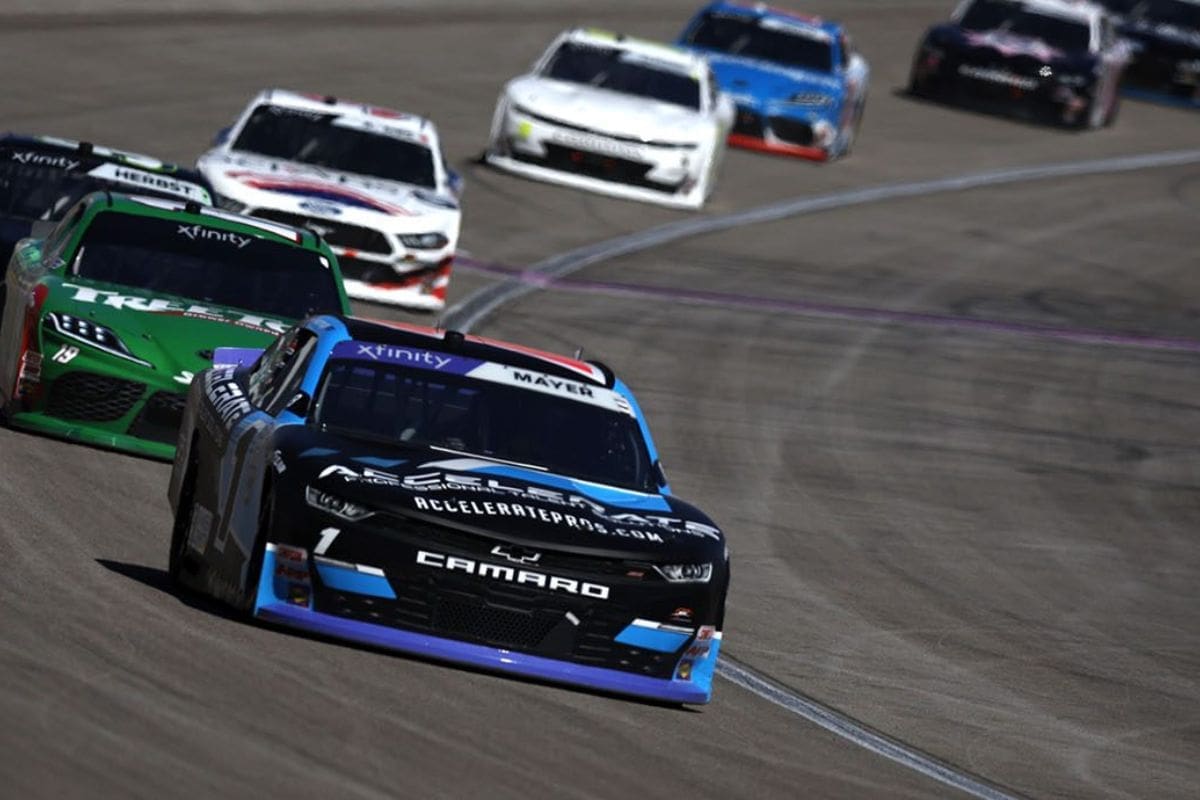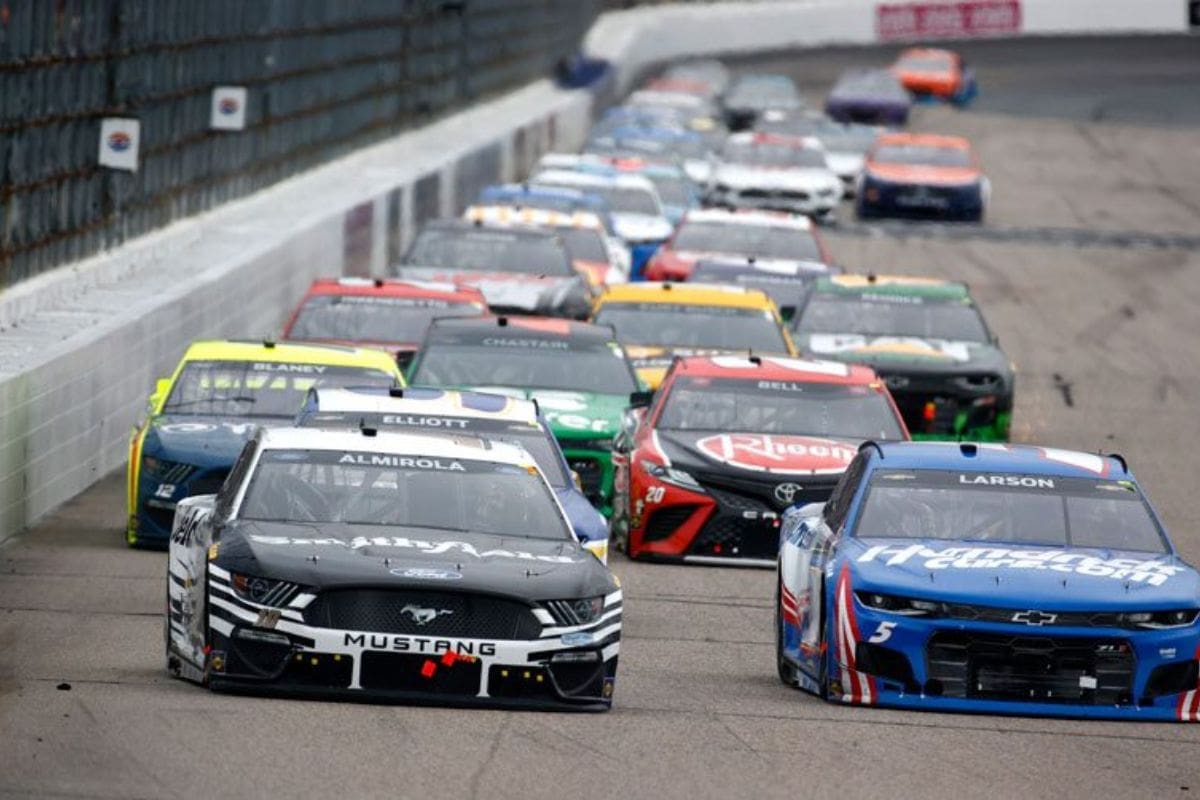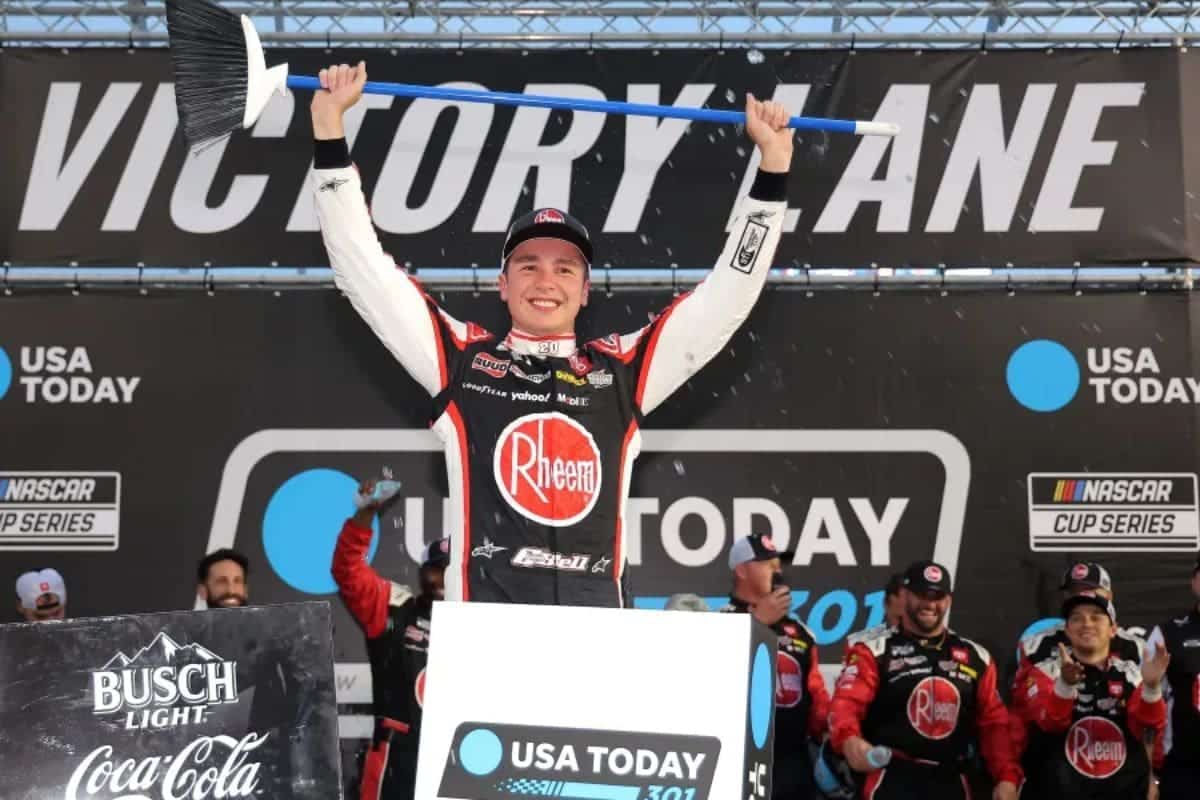NASCAR’s Red Flag Fiasco: The red flag decision during the NASCAR Cup Series race in New Hampshire has sparked significant controversy, with both drivers and fans expressing profound concerns. Rains prompted the deployment of the red flag, which many believed was premature given the presence of rain tires. Prominent drivers like Bubba Wallace and Dale Earnhardt Jr. criticized the decision, arguing that safety measures and driver input were undervalued. NASCAR’s resumption of the race after a lengthy delay aimed to uphold competitive integrity. Christopher Bell’s victory in wet conditions highlighted strategic skills, yet the debate over NASCAR’s protocols emphasizes ongoing tensions in the sport’s management.
Key Highlights
- The red flag decision during rain in New Hampshire sparked significant controversy among drivers and fans.
- Drivers like Bubba Wallace and Dale Earnhardt Jr. expressed frustration over the perceived unnecessary halt.
- The red flag highlights a gap between NASCAR’s decisions and the on-ground realities faced by drivers.
- Safety protocols versus competitive integrity became a central tension in NASCAR’s governance.
- Wet weather tires introduced a new variable but revealed mixed sentiments and a learning curve in optimal usage.
Controversy Over Red Flag Decision
The recent red flag decision at the NASCAR Cup Series race in New Hampshire’s oval track has sparked significant controversy, raising questions about the timing and necessity of halting the race. The imposition of the red flag occurred with approximately 80 laps remaining, just as the weather conditions began to show signs of potential dampness. Despite the forecasted rain, NASCAR had prepared adequately with three sets of tires, including those specifically designed for wet weather conditions.
However, the decision to deploy the red flag even before the rain intensified has drawn criticism. Especially, motorsport icon Dale Earnhardt Jr. voiced his concerns via social media, suggesting that the conditions did not yet warrant such an abrupt interruption. His observation that there were ‘no umbrellas in the interviews’ with driver Tyler Reddick highlights the argument that the weather, at that moment, did not pose a significant threat to safety or race progression.
NASCAR’s proactive measure to halt the race can be seen as a cautious approach, prioritizing driver safety above all. However, this preemptive decision contrasts sharply with the situational evidence, which indicated that the wet weather tires might have been sufficient to continue the race under the existing conditions. The lack of immediate and severe weather, as pointed out by Earnhardt Jr., further complicates the justification for the red flag.
This incident has ignited a broader discourse on NASCAR’s decision-making protocols and their alignment with real-time track conditions. Balancing safety with competitive integrity remains a delicate task for race officials. Nonetheless, this particular red flag decision has showed the need for perhaps a more subtle and flexible approach to race management under variable weather conditions.
Driver Frustrations and Reaction
Despite NASCAR’s intention to prioritize safety, the red flag decision has elicited significant frustration among drivers, who believe the race could have continued with the available rain tires. This sentiment was particularly vocalized by 23XI Racing star Bubba Wallace, who utilized his X account to voice his confusion. Wallace’s sardonic remark, ‘What rain tires…’ encapsulated a broader discontent within the driver community, suggesting that NASCAR’s decision overlooked available safety measures that could have kept the race in progress.
The decision to halt the race, even as rain tires sat unused, has drawn criticism from multiple quarters of the racing fraternity. Wallace’s pointed commentary was echoed by veteran driver Dale Earnhardt Jr., who saw it as a missed opportunity to test the limits and effectiveness of the rain tires under race conditions. Their dismay highlights a growing rift between NASCAR’s regulatory body and those behind the wheel, who feel that their input and the practical tools at their disposal are being undervalued.
No umbrellas in the interviews with @TylerReddick
Seems the exact scenario for this particular rain tire.
I’m not there. Feels like we should be racing tho.
— Dale Earnhardt Jr. (@DaleJr) June 23, 2024
Drivers’ frustrations are not merely about the race stoppage but also reflect deeper concerns about decision-making processes and communication. The red flag incident has highlighted a perceived disconnect between NASCAR’s administrative decisions and the on-ground realities faced by drivers. This gap in understanding can affect the trust and cohesion necessary for the sport’s smooth functioning.
NASCAR’s Decision to Resume the Race
Resuming the race after an extended red flag period of over two hours, NASCAR aimed to address the widespread discontent among fans and drivers, thereby attempting to bridge the growing divide within the racing community. The decision to continue the race was a direct response to the fervent appeals from both spectators and industry stakeholders, who felt that prematurely ending the event would undermine the competitive integrity of the sport.
Despite the justified safety concerns that initially led to the red flag, the prolonged delay had exacerbated frustrations. Dale Earnhardt Jr.’s vocal advocacy for the race to proceed, albeit with the use of wet weather tires, highlighted a broader sentiment among drivers who were keen to compete and settle the race on the track rather than in the control room. NASCAR’s eventual decision to resume racing was seen as a concession to this collective push for a more conclusive and fair outcome.
From an analytical perspective, NASCAR’s choice highlights a delicate balancing act between safety protocols and the imperatives of competitive sportsmanship. By opting to resume the race, NASCAR demonstrated responsiveness to its community, yet it also took on the inherent risks associated with unpredictable weather conditions. This decision, while potentially contentious, emphasized the organization’s commitment to maintaining the sport’s integrity and keeping fans engaged.
Use and Impact of Wet Weather Tires
Introducing wet weather tires during the New Hampshire race not only highlighted the potential for future strategic improvements in NASCAR’s approach to adverse weather conditions but also delivered an electrifying finish. The deployment of these tires emphasized NASCAR’s willingness to innovate and adapt to increasingly unpredictable weather patterns, marking a significant milestone in the sport’s evolution.
Elton Sawyer, NASCAR’s Senior Vice President for Competition, explained the rationale behind restricting the teams’ tire options after the race.
“Obviously, we’d like to be out of the tire business and just turn that over to the teams. But as we continue to take some small steps and we learn, eventually we’ll get there. We just wanted to do this in the safest way possible.” – Elton Sawyer
Analytically, the event demonstrated that wet weather tires can drastically alter race dynamics, introducing a new variable for teams to contemplate. The adaptation to wet track conditions required a nimble strategy, as drivers navigated the slippery surface with a blend of caution and aggression. This pivot from traditional dry-weather racing demanded not only a reassessment of tire management but also an acute awareness of track conditions that continuously evolved.
From a competitive standpoint, the introduction of wet weather tires brought an additional layer of excitement and unpredictability to the race. The concluding laps were particularly riveting, with drivers showcasing their skill in handling adverse conditions, thereby heightening the spectator experience. However, the implementation was not without its challenges. The learning curve associated with optimal tire usage in wet conditions became evident, suggesting that further refinement is needed.
Elton Sawyer explains the procedures of the wet weather tires, his evaluation of it, why NASCAR didn't call the race considering the severe weather threat in New Hampshire and why they had non-competitive pit stops. pic.twitter.com/3Lx8pzGaZm
— Bob Pockrass (@bobpockrass) June 24, 2024
Christopher Bell’s Victory and Race Dynamics
Christopher Bell’s expert handling of the challenging wet conditions highlighted his exceptional talent and strategic intelligence, resulting in a dominant victory at New Hampshire Motor Speedway. His performance was not just a reflection of his driving skills but also a masterclass in race management under adverse circumstances. Bell’s ability to maintain his composure and lead the field throughout the run on wet weather tires demonstrated a rare blend of precision and adaptability.
The race dynamics were greatly altered by the inclement weather, compelling teams to implement varied strategies to cope with the unpredictable grip levels. The track saw drivers adopting diverse lines—some hugging the apron while others ventured high—creating a spectacle of tactical navigation. The four-wide racing into turns further illustrated the intense competition and the focused search for top traction.
Despite the fluctuating conditions, Bell remained steadfast. His seventh win at New Hampshire Motor Speedway in just 11 national series starts highlights his profound affinity for the track. Even as the race extended into overtime, with drivers like Josh Berry and Chase Briscoe attempting to mount late comebacks, Bell’s unwavering focus and superior racecraft nullified their efforts.
News In Brief: NASCAR’s Red Flag Fiasco
The controversy surrounding the red flag decision has sharply divided drivers and fans, highlighting differing perspectives on race management.
The decision to resume the race, coupled with the use of wet weather tires, had significant implications on race dynamics and outcomes.
Christopher Bell’s victory under these conditions emphasizes the complexity and unpredictability inherent in NASCAR events.
A balanced assessment reveals the need for clearer protocols to mitigate future disputes and guarantee fairness in competitive racing environments.
Our Reader’s Queries
Q. What is the red flag in Nascar?
A. Per the NASCAR rule book, a red flag signifies an immediate halt to the race. Cars are required to either stop at their current position on the track or proceed to pit road. This protocol is implemented in cases of extensive on-track debris cleanup following a crash or when inclement weather forces a pause in racing.
ALSO READ: NASCAR Fans Outraged: Hardy’s Ally 400 Role Sparks Controversy



